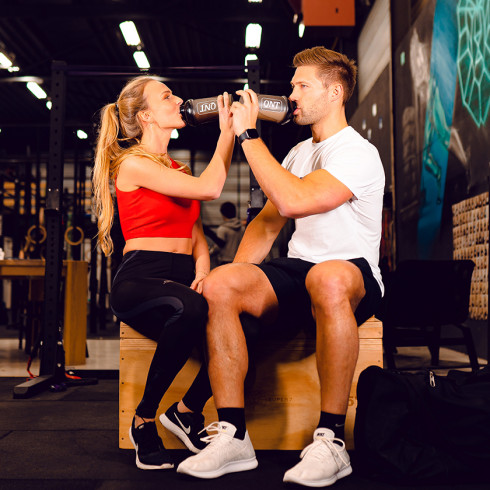Best Exercises for Shoulders
TABLE OF CONTENTS
THE SHOULDER JOINT: STRUCTURE AND FUNCTION
The shoulder joint is one of the most mobile in the human body, allowing for a wide range of motion, but also making it vulnerable to injuries. Its complex anatomy relies on several key structures: the glenohumeral joint, the rotator cuff, and the muscles that ensure its stability and power.
1. Anatomy of the Shoulder Joint
The shoulder is a ball-and-socket joint, which means it allows movement in almost all directions. It consists of three main joints:
- The Glenohumeral Joint
- Description: This is the main shoulder joint, where the head of the humerus (arm bone) connects with the glenoid cavity of the scapula.
- Characteristic: It is highly mobile but not very stable, as the glenoid cavity is shallow, requiring muscular and ligamentous reinforcement.
- The Acromioclavicular Joint
- Description: Connects the acromion (part of the scapula) to the clavicle.
- Role: Allows scapula movements and stabilizes the shoulder during arm lifts.
- The Sternoclavicular Joint
- Description: Connects the clavicle to the sternum.
- Role: Essential for shoulder elevation and rotation movements.
Interesting Fact: Unlike other major joints like the hip, the shoulder heavily depends on muscles for its stability.
2. Shoulder Muscles
The shoulder is surrounded by several muscle groups that ensure its movement and stability.
A. The Deltoid: The Primary Muscle
- Description: The deltoid is the large muscle that covers the shoulder joint. It is divided into three bundles:
- Anterior bundle: Involved in arm flexion and internal rotation.
- Lateral bundle: Responsible for abduction (lateral arm raise).
- Posterior bundle: Contributes to arm extension and external rotation.
B. The Rotator Cuff: Key Stabilizers
This group of four muscles ensures the stability and proper functioning of the shoulder:
- The Supraspinatus: Initiates arm abduction and keeps the humerus in the glenoid cavity.
- The Infraspinatus: Enables external rotation of the arm.
- The Teres Minor: Works with the infraspinatus for external rotation.
- The Subscapularis: Responsible for internal rotation of the arm.
Key Point: These muscles are often under-trained, which can lead to imbalances and injuries.
C. The Supporting Back Muscles
Although we talk about the shoulder, some back muscles play an important role in its movements:
- Trapezius: Involved in scapula elevation and retraction.
- Latissimus Dorsi: Participates in pulling and internal rotation movements of the arm.
- Rhomboids: Stabilize the scapula against the ribcage.
3. Biomechanical Specificities of the Shoulder
- Its incredible mobility: It allows movements in all planes: flexion, extension, abduction, adduction, internal and external rotations.
- Its reliance on muscles for stability: Unlike other joints, it is mainly the muscles that ensure its maintenance.
- Its vulnerability to injuries: A weakness or muscular imbalance can quickly lead to pain or conditions such as rotator cuff tendinitis or glenohumeral instability.
4. How to Strengthen and Protect Your Shoulders?
- Include specific exercises: Such as external rotations for the rotator cuff and shrugs for the trapezius.
- Work on muscle balance: Don't neglect the rear shoulders and back muscles.
- Improve mobility: With stretches and motor control exercises to reduce tension and prevent injuries.
The shoulder is a fascinating joint, combining strength and mobility, but it requires precise muscular work to avoid injuries. By understanding its anatomy and strengthening the key muscles, you can improve your performance while preserving the long-term health of your shoulders.
10 EFFECTIVE EXERCISES TO STRENGTHEN THE SHOULDERS
The shoulders are complex joints that play a key role in most upper body movements. Whether it's to improve your athletic performance, prevent injuries, or simply develop a well-balanced physique, strengthening your shoulders is essential. Here are 10 effective exercises for stronger and more sculpted shoulders.
1. MILITARY PRESS (OVERHEAD PRESS)
The military press is one of the most effective exercises for developing shoulder strength, power, and stability. It is essential for bodybuilders, weightlifters, and even CrossFit practitioners due to its numerous benefits for the upper body.
Targeted Muscles
This exercise primarily engages:
- The anterior deltoid: The main driver of the movement, responsible for flexion and arm elevation.
- The middle deltoid: Works in support to stabilize the shoulder.
- The triceps brachii: Plays an important role in elbow extension during the push.
- The trapezius (upper and middle): Help stabilize the scapular girdle and control the movement of the barbell or dumbbells.
- The trunk stabilizing muscles: Such as the abdominal core and lower back, which prevent excessive lower back extension.
Why Adopt It?
The military press is a compound exercise that offers several advantages:
- Overall shoulder development: It allows for muscle mass gain and improved shoulder definition.
- Increased functional strength: This movement simulates everyday actions and improves the ability to lift objects overhead.
- Improved scapular stability: It strengthens the rotator cuff and stabilizing muscles, thus reducing injury risks.
- Engagement of the trunk: In the standing position, it requires good core engagement to maintain proper alignment and prevent compensations in the lower back.
Movement Execution
1. Starting Position
- Hold a barbell or dumbbells at shoulder level with your palms facing forward (pronated grip).
- Place your hands slightly wider than shoulder width.
- Maintain an upright posture with your feet shoulder-width apart for good balance.
- Engage your abdominal core to protect your back and avoid excessive arching.
2. Push Phase
- Take a deep breath, then press the weight vertically above your head, fully extending your arms.
- Keep your elbows slightly bent at the top to avoid hyperextension.
- During the lift, avoid excessively arching your back by keeping your abs contracted.
3. Descent Phase
- Slowly lower the weight back down to shoulder height while controlling the movement.
- Exhale at the end of the movement.
- Repeat the exercise for the desired number of repetitions.
Military Press Variations
- Seated Military Press: More stable, it reduces the involvement of the lower body and allows focusing solely on the shoulders.
- Dumbbell Press: Promotes better recruitment of stabilizers and a more natural range of motion.
- Behind-the-neck Press: Targets the posterior deltoid more but can be risky for the shoulders if mobility is lacking.
- Push Press: Adds a leg drive to lift heavier weights.
Tips for Perfect Execution
- Warm up properly with mobility exercises and light sets to prepare the shoulder joint.
- Avoid overloading the bar at first to prioritize technique and prevent injuries.
- Keep your back straight and your gaze fixed to avoid excessive arching of the spine.
- Perform the movement smoothly and controlled, avoiding jerks that increase the risk of injury.
Common Mistakes to Avoid
- Excessively arching the back: This can cause lower back pain.
- Lowering too far: Bringing the bar below the clavicle can overstrain the rotator cuff.
- Spreading the elbows too wide: This reduces the effectiveness of the movement and increases the risk of injury.
- Using excessive momentum: Unless doing a push press, momentum reduces muscle engagement and can compromise control of the movement.
The military press is a foundational exercise for shoulder strengthening. It helps improve both the power, stability, and aesthetics of this joint. By properly integrating it into your training routine and following the correct posture guidelines, you will optimize your gains while minimizing the risk of injuries.
2. LATERAL RAISES
The lateral raises are one of the most effective exercises for sculpting wide and well-defined shoulders. By focusing on the lateral deltoid bundle, they help give the body a broader appearance and improve the aesthetics of the upper body.
Targeted Muscles
This exercise primarily isolates the lateral deltoid, which is responsible for arm abduction (the lateral movement of the arm away from the body).
- Lateral deltoid: The primary target of the movement, it gives the rounded and broad look to the shoulders.
- Anterior and posterior deltoids (secondarily engaged): Stabilize the shoulder and slightly assist in the movement.
- Upper trapezius: Helps stabilize the scapula and support arm elevation.
Particularity: Unlike compound exercises like the military press, lateral raises are an isolation exercise that focuses specifically on one muscle bundle.
Why Adopt It?
- Aesthetic development: Emphasizes shoulder width and improves the waist-to-shoulder ratio for a V-shaped physique.
- Targeted work: Allows isolation of the lateral deltoid, often undertrained in pushing exercises.
- Accessible exercise: Easy to perform, even for beginners, with minimal equipment required.
- Improved shoulder stability: Strengthens the rotator cuff and stabilizing muscles.
Movement Execution
1. Starting Position
- Hold a dumbbell in each hand, arms by your sides, with a neutral grip (palms facing your body).
- Adopt a stable posture: feet shoulder-width apart, knees slightly bent.
- Keep a slight bend in your elbows to protect the joint.
2. Upward Phase
- Inhale and slowly raise your arms to the sides until they are level with your shoulders.
- Keep your wrists aligned with your forearms (avoid bending the wrists).
- Tip: Imagine pouring a glass of water to slightly tilt the dumbbells forward.
3. Downward Phase
- Slowly lower the weights, controlling the movement, back to the starting position.
- Exhale at the bottom of the movement before starting again.
- Maintain constant tension by avoiding fully relaxing the muscles.
Lateral Raise Variations
- Seated Lateral Raises: Limits lower body momentum for better muscle isolation.
- Alternating Dumbbell Raises: Allows for better focus on one arm at a time.
- Elastic Band Lateral Raises: Adds progressive resistance for smoother motion.
- Inclined Position Lateral Raises: Targets the deltoid more and reduces trapezius involvement.
Tips for Perfect Execution
- Choose an appropriate weight: Too heavy = compensation with the trapezius and reduced effectiveness.
- Keep your elbows slightly bent to avoid excessive tension on the joint.
- Raise your arms to shoulder height, not higher to limit trapezius involvement.
- Control the descent: Don’t let the dumbbells drop, the eccentric phase is crucial.
- Keep your back straight and engage your core to avoid cheating with momentum.
Common Mistakes to Avoid
- Cheating with the back: Swinging reduces the isolation of the deltoid and increases the risk of injury.
- Using too heavy a weight: The trapezius takes over, reducing the effectiveness of the exercise.
- Raising the arms too high: At a certain angle, the upper trapezius takes over, reducing deltoid activation.
- Locking the elbows: This can lead to excessive tension on the joints.
The lateral raises are a must-do exercise for developing broad and aesthetic shoulders. By ensuring proper execution and avoiding common mistakes, you will maximize recruitment of the lateral deltoid and improve your physique while enhancing shoulder stability.
3. DUMBBELL REAR DELTOID FLY (REVERSE FLY)
The dumbbell rear deltoid fly is an essential exercise for strengthening the rear shoulders and improving posture. It primarily targets the posterior deltoid, a commonly neglected muscle, as well as the trapezius and other stabilizing muscles of the upper back. It is especially useful for balancing shoulder muscle development and preventing injuries.
TARGETED MUSCLES
The dumbbell rear deltoid fly targets several key upper body muscles:
- Posterior deltoid: The primary muscle of the movement, essential for shoulder posture and balance.
- Middle and lower trapezius: Help stabilize and mobilize the shoulder blades.
- Rhomboids: Contribute to bringing the shoulder blades together and strengthening the back.
- Rotator cuff: Plays an essential stabilizing role to prevent shoulder injuries.
Why is this exercise important?
Unlike pushing movements that primarily target the front shoulders (such as military press or front raises), the rear deltoid fly allows for balanced training to avoid muscle imbalances.
WHY ADOPT IT?
- Improves posture: Corrects the rounding of shoulders forward caused by overly dominant front muscles.
- Prevents injuries: Strengthens the rotator cuff and reduces shoulder pain.
- Develops the rear shoulders: A strong posterior deltoid enhances muscle balance and the aesthetics of the upper body.
- Complements push workouts: Ideal for balancing pressing movements and avoiding strength imbalances.
EXECUTION OF THE MOVEMENT
1. STARTING POSITION
- Hold a dumbbell in each hand, with a neutral grip (palms facing each other).
- Slightly bend your knees and lean your torso forward at about a 45° angle while keeping your back straight.
- Keep your arms slightly bent to minimize tension on the elbows.
2. LIFTING PHASE
- Inhale and slowly raise your arms to the sides, keeping a controlled movement.
- Lift until your arms are level with your shoulders, without exceeding the alignment of your back.
- Focus on contracting the posterior deltoid and avoid excessively activating the trapezius.
3. DESCENT PHASE
- Slowly lower the dumbbells, controlling the movement.
- Maintain slight tension in your muscles at the bottom to avoid full relaxation.
- Repeat the exercise while maintaining good posture throughout the movement.
VARIATIONS OF THE DUMBBELL REAR DELTOID FLY
- Seated reverse fly on an inclined bench: Reduces lower body involvement and allows better muscle isolation.
- Low pulley reverse fly: Provides continuous tension and allows better muscle activation.
- Elastic band reverse fly: Ideal for adding progressive resistance and protecting the joints.
- Unilateral reverse fly with support: Allows focused concentration on one side at a time to correct any imbalances.
TIPS FOR PERFECT EXECUTION
- Control the weight: Opt for a moderate weight to maximize muscle isolation and avoid cheating with your back.
- Avoid excessively activating the trapezius: Focus on the movement of the shoulders, not the neck.
- Keep your back straight: A curved back increases injury risk and reduces the exercise's effectiveness.
- Use a slow tempo: Controlled execution maximizes muscle recruitment and reduces compensation risks.
COMMON MISTAKES TO AVOID
- Using too heavy a weight: This can lead to excessive activation of the trapezius and poor execution.
- Not leaning forward enough: A poor lean reduces posterior deltoid activation.
- Lifting the dumbbells too high: Beyond a certain point, the upper trapezius takes over, reducing movement effectiveness.
- Bending the elbows too much: This can turn the exercise into a row and limit posterior deltoid activation.
The dumbbell rear deltoid fly is an essential exercise for strengthening the rear shoulders, correcting posture, and preventing muscle imbalances. By mastering the technique and avoiding common mistakes, you will optimize the development of your posterior deltoids and improve shoulder stability.
4. ARNOLD PRESS
The Arnold press, popularized by Arnold Schwarzenegger, is a variation of the military press that targets all the deltoid muscles by adding a wrist rotation. This rotation allows for a more complete muscle recruitment, making this exercise one of the most effective for sculpting powerful and well-defined shoulders.
TARGETED MUSCLES
Unlike the classic military press, the Arnold press engages all the deltoid bundles as well as several stabilizing muscles:
- Anterior deltoid: Strongly involved during the push phase.
- Lateral deltoid: Helps elevate the arm and adds width to the shoulders.
- Posterior deltoid: Activated during the wrist rotation and control of the movement.
- Upper trapezius: Stabilizes the scapula during the lift.
- Triceps: Engaged for arm extension overhead.
Why is it so effective?
The addition of a rotation increases the range of motion and recruits muscles that the classic military press does not activate as much, particularly the posterior deltoid and the stabilizing muscles of the shoulder.
WHY ADOPT IT?
- Complete shoulder workout: Targets all deltoid bundles for balanced development.
- Improves mobility and stability: The rotation engages the rotator cuff and strengthens shoulder stability.
- Increases muscle mass: Ideal for those who want large and well-sculpted shoulders.
- Reduces the risk of muscle imbalances: The rotation phase activates the often undertrained posterior muscles.
EXECUTION OF THE MOVEMENT
1. STARTING POSITION
- Hold a dumbbell in each hand, palms facing you, and position them in front of your face at shoulder height.
- Keep your elbows bent and close to your body.
- Position your feet at hip-width for good stability.
2. LIFTING PHASE (Push and Rotation)
- Inhale and start pushing the dumbbells upward while rotating your wrists outward.
- At the top of the movement, your palms should be facing forward, with your arms fully extended overhead.
- Keep a slight bend in your elbows to avoid hyperextension.
3. DESCENT PHASE (Controlled Return)
- Slowly lower the dumbbells, reversing the wrist rotation to return to the starting position.
- Exhale at the end of the movement.
- Maintain good muscle control to avoid jerky movements.
VARIATIONS OF THE ARNOLD PRESS
- Seated Arnold press: Reduces lower body involvement and allows better movement control.
- Alternating Arnold press: Allows better focus on one arm at a time.
- Arnold press with elastic bands: Adds progressive resistance for a smoother and more joint-friendly workout.
TIPS FOR PERFECT EXECUTION
- Use a moderate weight: The range of motion and rotation require good muscle control.
- Keep your back straight and core engaged: Avoid excessive lumbar arch during the push.
- Raise and lower with control: Don’t let the dumbbells drop abruptly.
- Do not lock your elbows completely: Keep a slight bend at the top of the movement.
- Keep your elbows forward at the start: This allows better activation of both the anterior and posterior deltoid.
COMMON MISTAKES TO AVOID
- Using too heavy a weight: This can lead to loss of control and limit proper wrist rotation.
- Excessively arching the back: This can cause lower back pain. Be sure to engage your abs.
- Performing the movement too quickly: A fast movement reduces effectiveness and increases injury risk.
- Not respecting the wrist rotation: This reduces posterior deltoid activation and decreases the benefits of the exercise.
The Arnold press is a versatile exercise that helps strengthen all deltoid bundles and improve shoulder stability. Thanks to its unique rotation, it provides optimal muscle development while reducing the risk of injuries. Add it to your workout routine for stronger and more aesthetic shoulders!
5. FACE PULLS (ROPE PULL)
The Face Pull, or rope pull, is an essential exercise for strengthening the rear shoulders, improving posture, and preventing injuries. It primarily targets the posterior deltoids and trapezius, while also engaging the rotator cuff, making it an ideal movement for balancing shoulders that are often overworked by pushing exercises (bench press, military press).
TARGETED MUSCLES
The Face Pull engages several important muscle groups:
- Posterior deltoid: The primary muscle of the movement, it helps open the shoulders and correct postural imbalances.
- Middle and lower trapezius: Stabilize the scapula and promote better posture.
- Rhomboids: Help bring the shoulder blades together and strengthen the upper back.
- Rotator cuff: Crucial for shoulder stability, it is strengthened by the external rotation during the pull.
Why is it so effective?
Unlike pushing exercises, which mainly develop the front of the shoulders, the Face Pull helps rebalance posture by strengthening the back of the body.
WHY ADOPT IT?
- Strengthens the rear shoulders: Ideal for balancing deltoid work and avoiding muscle imbalances.
- Improves posture: Helps counteract the effects of a slouched posture due to excessive pushing exercises or poor ergonomics in daily life.
- Reduces injury risk: Protects the shoulder by strengthening the rotator cuff and scapular stabilizers.
- Suitable for all levels: Easy to execute and adaptable depending on load and range of motion.
EXECUTION OF THE MOVEMENT
1. STARTING POSITION
- Set the high pulley to face height and attach a rope to the pulley.
- Grab the rope with a neutral grip (palms facing each other) and take a step back to tension the rope.
- Slightly bend your knees and keep your back straight for a stable posture.
2. PULLING PHASE (CONTRACTION)
- Inhale and pull the rope towards your face, ensuring to spread your elbows wide.
- At the top of the movement, your hands should be at either side of your head, with your elbows at shoulder height.
- Hold the contraction for one second to fully activate the posterior deltoids and trapezius.
3. RETURN PHASE (DECONTRACTION)
- Exhale and slowly return the rope to the starting position, controlling the load to avoid any jerking movements.
- Maintain a constant tension on the muscles throughout the movement.
- Repeat the exercise for the desired number of repetitions.
FACE PULL VARIATIONS
- Face Pull with Elastic Band: Ideal for gentler joint work with progressive tension.
- Unilateral Face Pull: Allows better focus on each shoulder and corrects muscle imbalances.
- Seated Face Pull: Eliminates lower body involvement and isolates the movement better.
- Face Pull with External Rotation: Emphasizes rotator cuff work by adding a final wrist rotation toward the back.
TIPS FOR PERFECT EXECUTION
- Keep your back straight and core engaged: Avoid rounding your shoulders or using excessive momentum.
- Pull by spreading your elbows: Your arms should form a W at the end of the movement, not a tight V.
- Use a moderate load: Too heavy, and you risk activating more upper trapezius muscles rather than the posterior deltoids.
- Do not lock your elbows: Keep a natural bend to avoid excessive tension.
- Keep your elbows forward at the start: This helps better activate both the anterior and posterior deltoid.
COMMON MISTAKES TO AVOID
- Pulling too low or too high: The rope should reach face level, not chest or forehead level.
- Using excessive momentum: This is not a power exercise; it’s about muscle control.
- Primarily activating the upper trapezius: Focus on the posterior deltoids and upper back.
- Not holding the contraction: A one-second hold at the top maximizes muscle activation.
The Face Pull is a key exercise for strengthening the rear shoulders, improving posture, and preventing injuries. Suitable for all levels, it is especially recommended to balance push workouts and ensure good shoulder stability. Add it to your routine and feel the difference in your posture and performance!
6. DUMBBELL SHRUGS
Dumbbell Shrugs, or shoulder raises, are one of the best exercises for developing the trapezius muscles and improving shoulder stability. They are simple to execute but highly effective for strengthening the upper back muscles and improving posture.
TARGETED MUSCLES
This exercise primarily targets:
- Upper trapezius: The main muscle of the movement, responsible for elevating the shoulders.
- Middle trapezius: Helps stabilize the scapula and maintain an upright posture.
- Deltoids: Particularly the posterior bundle, which aids in stabilizing the shoulder.
- Trunk stabilizing muscles: Core engagement is necessary to maintain good posture during the movement.
Why is it important?
Shrugs help strengthen the muscles supporting the neck and shoulders, reducing tension and the risk of injury, particularly for those with a slouched posture.
WHY ADOPT IT?
- Massive trapezius development: Ideal for building volume and strength in the upper back.
- Improves posture: Strengthens postural muscles to prevent shoulder rounding.
- Shoulder stabilization: Protects against injuries by strengthening the neck and upper back base.
- Easy to perform: Suitable for all levels and doesn’t require complex technique.
EXECUTION OF THE MOVEMENT
1. STARTING POSITION
- Hold a dumbbell in each hand with your arms extended down by your sides, in a neutral grip (palms facing your thighs).
- Place your feet at hip-width to ensure good stability.
- Keep your back straight and gently engage your abdominal muscles to stabilize the movement.
The shoulder is a fascinating joint, combining strength and mobility, but it requires precise muscular work to avoid injuries. By understanding its anatomy and strengthening the key muscles, you can improve your performance while preserving the health of your shoulders in the long term.
2. LIFTING PHASE (CONTRACTION)
- Inhale and raise your shoulders as high as possible, as if trying to touch your ears with your trapezius.
- Hold the contraction for one second at the top, keeping your arms extended.
The shoulder is a fascinating joint, combining strength and mobility, but it requires precise muscular work to avoid injuries. By understanding its anatomy and strengthening the key muscles, you can improve your performance while preserving the health of your shoulders in the long term.
3. DESCENT PHASE (DECONTRACTION)
- Exhale and slowly lower your shoulders while controlling the movement.
- Do not fully relax the tension at the bottom to maintain muscle activation.
- Repeat the exercise for the desired number of repetitions.
VARIATIONS OF SHRUGS
- Shrugs with barbell: Allows for heavier lifting, ideal for developing strength and muscle volume.
- Alternating dumbbell shrugs: One arm at a time for better muscle concentration.
- Shrugs with elastic band: Provides progressive resistance for smoother movement.
- Shrugs on the Smith Machine: Helps stabilize the movement and allows for heavier loads.
TIPS FOR PERFECT EXECUTION
- Use an appropriate load: Too light, and the exercise loses effectiveness; too heavy, and you risk targeting the wrong muscles.
- Perform a strict movement: Avoid swinging the dumbbells or bending your elbows.
- Maintain good body alignment: Avoid tilting your head forward or excessively arching your back.
- Focus on contracting the trapezius: Do not pull with your arms; your shoulders should do all the work.
COMMON MISTAKES TO AVOID
- Making circles with the shoulders: This provides no additional benefit and can cause unnecessary joint tension.
- Bending the elbows too much: This turns the exercise into a bicep movement, reducing its effectiveness on the trapezius.
- Using excessive momentum: Shrugs should be done slowly and under control, without jerky movements.
- Letting go too quickly at the bottom: The negative phase of the movement is just as important as the lift for proper muscle development.
Dumbbell shrugs are a simple yet very powerful exercise to strengthen the trapezius, stabilize the shoulders, and improve posture. By applying the correct technique and avoiding common mistakes, you will maximize your muscle gains and protect your back from tension and injuries. Add this exercise to your routine for strong and well-defined shoulders!
7. FRONT RAISES
The front raises are an excellent exercise for strengthening and developing the anterior deltoid, the front part of the shoulder. This isolation movement is particularly effective for enhancing muscle definition, improving strength, and complementing pushing exercises like the military press or bench press.
TARGETED MUSCLES
The front raises primarily target:
- Anterior deltoid: The main muscle of the movement, responsible for shoulder flexion.
- Upper pectoral fibers (secondarily activated): Contributes to the arm lift movement.
- Upper trapezius: Acts as a stabilizer, especially when the load is heavy.
- Core stabilizing muscles: Help maintain an upright posture and control the movement.
Why is it important?
The anterior deltoid is heavily engaged in pushing exercises (bench press, military press), but front raises allow it to be worked in isolation, maximizing muscle development and definition.
WHY ADOPT IT?
- Targeted development of the anterior deltoid: Ideal for sculpting the front of the shoulder.
- Improves performance in pushing exercises: A strong anterior deltoid helps progress in military press and bench press.
- Symmetry and muscle balance work: Prevents the anterior fibers from being underdeveloped compared to other deltoid fibers.
- Accessible to all levels: Can be performed with dumbbells, a barbell, plates, or even a resistance band.
EXECUTION OF THE MOVEMENT
1. STARTING POSITION
- Take a dumbbell in each hand, with a neutral grip (palms facing your thighs).
- Place your feet shoulder-width apart to ensure good stability.
- Keep your arms extended but slightly bent to avoid overloading the elbows.
2. ASCENT PHASE (CONTRACTION)
- Inhale and raise one arm at a time (or both simultaneously) to shoulder height.
- Maintain a controlled range of motion and avoid lifting above shoulder level.
- Tip: Keep the dumbbells slightly tilted, as if pouring water from a glass.
3. DESCENT PHASE (RELAXATION)
- Exhale and slowly lower the dumbbells, without jerking.
- Keep the movement smooth and controlled, maintaining constant tension on the muscles.
- Repeat the movement for the desired number of repetitions.
VARIANTS OF FRONT RAISES
- Alternating dumbbell front raises: Allows better focus on each arm individually.
- Plate front raises: A variation that engages the core more to stabilize the movement.
- Barbell front raises: Allows working with heavier loads.
- Resistance band front raises: Adds progressive resistance that protects the joints.
TIPS FOR PERFECT EXECUTION
- Control the load: A load that is too heavy leads to compensation with the traps and lower back.
- Maintain an upright posture: Engage your core to avoid tilting your torso backward.
- Do not raise too high: Avoid going above shoulder level to minimize tension on the joint.
- Perform a fluid movement: Do not use momentum and avoid jerky movements.
COMMON MISTAKES TO AVOID
- Using excessive momentum: Can cause lower back pain and reduce the effectiveness of the movement.
- Raising too high: Unnecessarily stresses the joint and increases the risk of injury.
- Arching the back: An overly arched back indicates a load that is too heavy or a lack of core stability.
- Forgetting to control the descent: The eccentric phase is just as important as the ascent for maximizing muscle gains.
Front raises are a key exercise to develop the front of the shoulders and improve strength in pushing movements. By controlling the movement and avoiding common mistakes, you will maximize the recruitment of the anterior deltoid and enhance the aesthetics and power of your shoulders. Incorporate this exercise into your routine for stronger, more balanced shoulders!
8. CUBAN PRESS.
The Cuban Press is a very effective exercise to strengthen both the deltoids and the rotator cuff, thus playing a key role in injury prevention and improving shoulder stability. This exercise combines an external rotation and a press, making it a complete movement, ideal for athletes and bodybuilders looking to improve the health and performance of their shoulders.
TARGETED MUSCLES
The Cuban Press targets several essential muscle groups:
- Deltoids (all fibers): Especially the anterior and lateral fibers.
- Rotator cuff: Strengthens the small stabilizing muscles of the shoulder (supraspinatus, infraspinatus, teres minor, subscapularis).
- Middle and lower trapezius: Stabilize the scapulae and support the rotation movement.
- Triceps: Engage during the final pushing phase.
Why is it so effective?
Unlike traditional presses, the Cuban Press incorporates an external rotation, strengthening the rotator cuff and helping prevent shoulder injuries, which are common in bodybuilding and sports.
WHY ADOPT IT?
- Improves shoulder stability: By strengthening the rotator cuff, it reduces the risk of injuries.
- Develops balanced shoulders: Works on both strength and joint mobility.
- Corrects muscle imbalances: Ideal for bodybuilders with weaknesses in external rotation.
- Promotes better posture: By strengthening the postural muscles, it helps counteract forward shoulder rounding.
EXECUTION OF THE MOVEMENT
1. STARTING POSITION
- Take a dumbbell in each hand, with a wide grip (palms facing forward).
- Bend your elbows to 90° so that the dumbbells are aligned with your shoulders and your forearms are perpendicular to the floor.
- Keep your back straight and engage your abs to stabilize the movement.
2. EXTERNAL ROTATION PHASE
- Inhale and perform an external rotation by turning the dumbbells upwards, until your forearms are parallel to the floor.
- Hold this position for a second to fully engage the rotator cuff.
3. PRESS PHASE (DEVELOPED)
- From this position, push the dumbbells overhead in a strict press.
- Maintain good control and avoid arching your lower back.
4. DESCENT PHASE (CONTROLLED RETURN)
- Slowly lower the dumbbells by reversing the movement:
- Bring the dumbbells back to the external rotation position.
- Return to the starting position (elbows at 90°).
- Exhale and prepare for the next repetition.
CUBAN PRESS VARIANTS
- Cuban Press with light dumbbells: Helps master the movement and maximize work on the rotators.
- Cuban Press with barbell: A more stable variation, ideal for progressing with heavier loads.
- Cuban Press with resistance band: An excellent option to add progressive resistance and protect the joints.
- Unilateral Cuban Press: Focuses on each shoulder individually to correct imbalances.
TIPS FOR PERFECT EXECUTION
- Start with a light load: The priority is the quality of the movement, not the weight lifted.
- Control each phase of the movement: Avoid any jerky movements to maximize muscle activation.
- Keep your back straight and abs engaged: Prevent compensations and protect your spine.
- Work through the full range of motion: A good external rotation is essential to properly activate the rotator cuff.
COMMON MISTAKES TO AVOID
- Using a load that's too heavy: Can lead to incomplete execution and lack of engagement from the rotators.
- Neglecting external rotation: Many practitioners skip this step, reducing the effectiveness of the movement.
- Arching the back during the press: Indicates weak core engagement and poor control of the movement.
- Lowering too quickly: The negative phase is just as important as the upward phase for optimal strengthening.
The Cuban Press is a must-do exercise to strengthen shoulder stability, develop strong and balanced deltoids, and protect the rotator cuff. By incorporating this exercise into your routine, you will improve your posture, mobility, and performance in pushing exercises. A must for anyone wanting powerful and healthy shoulders!
9. PIKE PUSH-UPS.
The Pike Push-Ups are a variation of the classic push-ups that primarily target the shoulders rather than the pectorals. This bodyweight exercise is ideal for strengthening the anterior deltoids, improving shoulder strength, and preparing for more advanced movements like handstand push-ups (Handstand Push-Ups). It is particularly useful for those training at home or looking to develop their strength without equipment.
TARGETED MUSCLES
The Pike Push-Ups engage several upper body muscle groups:
- Anterior deltoid: The main muscle involved in the movement, responsible for pushing.
- Triceps brachii: Involved in elbow extension.
- Upper trapezius: Stabilizes the shoulder girdle.
- Upper pectorals: Secondarily activated during the pushing phase.
- Core muscles (core stability): Essential for maintaining posture and preventing back collapse.
Why is it effective?
Unlike classic push-ups, Pike Push-Ups shift the body weight forward, thus increasing shoulder engagement and mimicking the biomechanics of vertical presses like the military press.
WHY ADOPT IT?
- Accessible exercise without equipment: Can be performed anywhere and easily modified based on your level.
- Strengthens shoulders and triceps: Ideal for developing the strength needed for vertical movements.
- Prepares for Handstand Push-Ups: An excellent progressive exercise for those wanting to master handstand push-ups.
- Improves scapular stability: Strengthens postural muscles and shoulder stabilizers.
EXECUTION OF THE MOVEMENT
1. STARTING POSITION
- Place yourself in the classic push-up position, then lift your hips up to form an inverted V (pike position).
- Your hands should be slightly wider than shoulder-width apart.
- Keep your legs straight or slightly bent depending on your mobility.
2. DESCENT PHASE
- Inhale and slowly lower your head towards the floor, keeping your elbows bent and directed outward.
- Maintain a vertical trajectory, as if performing an inverted military press.
3. PUSH PHASE
- Push strongly against the floor to return to the starting position.
- Exhale at the end of the movement and contract your shoulders for maximum engagement.
PIKE PUSH-UP VARIANTS
- Elevated Pike Push-Ups: Place your feet on a bench or box to increase the difficulty.
- Pike Push-Ups with feet on the wall: Progression towards Handstand Push-Ups by adding more verticality.
- Unilateral Pike Push-Ups: Work one arm at a time for an additional challenge.
- Pike Push-Ups with resistance band: Adds progressive resistance for more effective strengthening.
TIPS FOR PERFECT EXECUTION
- Keep your back straight and abs engaged: Avoid rounding your lower back.
- Direct your elbows outward: Make sure your arms don’t flare out too much to avoid unnecessary strain.
- Descend slowly and control the movement: This maximizes muscle engagement and reduces the risk of injury.
- Adjust the angle according to your level: The higher the hips, the more emphasis is placed on the shoulders.
COMMON MISTAKES TO AVOID
- Excessively arching your back: Indicates a lack of core engagement, which can lead to lower back pain.
- Descending too quickly: An uncontrolled descent increases the risk of shoulder injuries.
- Keeping elbows too close to the body: Reduces shoulder engagement and overloads the triceps.
- Not going low enough: For maximum benefits, try to bring your head as close to the ground as possible.
Les Pike Push-Ups sont une excellente alternative aux développés verticaux avec haltères ou barre. Ils permettent de renforcer les épaules, les triceps et le haut du dos, tout en étant accessibles sans équipement. En les intégrant régulièrement dans votre routine, vous améliorerez votre force, votre posture et votre contrôle corporel. Un must pour des épaules solides et fonctionnelles !
10. EXTERNAL ROTATION WITH RESISTANCE BAND.
The external rotation with resistance band is a fundamental exercise to strengthen the rotator cuff, improve shoulder stability, and prevent injuries. It is particularly recommended for bodybuilding, weightlifting, and sports that heavily engage the shoulders, such as swimming, tennis, or CrossFit.
TARGETED MUSCLES
This exercise primarily targets:
- Infraspinatus and teres minor: Two rotator cuff muscles responsible for external shoulder rotation.
- Posterior deltoid: Involved in stabilization.
- Lower trapezius and rhomboids: Help maintain correct posture.
- Scapular stabilizing muscles: Allow for proper scapular alignment.
Why is it so important?
A muscle imbalance between internal rotators (often overused) and external rotators can lead to pain and injuries. This exercise helps rebalance the shoulder and make it more resilient.
WHY ADOPT IT?
- Injury prevention: Strengthens the rotator cuff, reducing the risk of tendonitis or shoulder instability.
- Improves stability and posture: Corrects muscle imbalances and reduces shoulder rounding.
- Indispensable for athletes: Increases shoulder resilience for sports involving throwing or pushing movements.
- Easy and effective: Requires only a resistance band, making it accessible anywhere.
EXECUTION OF THE MOVEMENT
1. STARTING POSITION
- Attach a resistance band at waist height (post, machine, or another stable anchor point).
- Hold the band with a neutral grip (palms facing inward).
- Place the elbow close to the body, forming a 90° angle with the forearm.
2. EXTERNAL ROTATION PHASE
- Inhale and perform an external shoulder rotation, pulling the band outward.
- Keep the elbow stationary and the scapula stable.
- Go to your maximum range of motion without compensation.
3. RETURN PHASE
- Exhale and slowly return to the starting position, controlling the resistance of the band.
- Maintain constant tension on the band for better muscle engagement.
- Repeat the exercise with a smooth, jerky-free movement.
VARIANTS OF THE EXTERNAL ROTATION WITH RESISTANCE BAND
- External rotation standing: Classic version to strengthen the shoulder isometrically.
- External rotation lying with dumbbell: Allows working with constant resistance against gravity.
- External rotation in neutral scapular position: Execution with the arm slightly raised for different activation.
- External rotation on Swiss Ball: Adds core stability and stabilization work.
TIPS FOR PERFECT EXECUTION
- Keep the elbow close to the body: It should not move to avoid compensation.
- Use a resistance band with moderate tension: Too much tension may engage other muscles and reduce the movement's effectiveness.
- Maintain an upright posture: Avoid rounding your shoulders or arching your back.
- Control the return phase: The negative phase is just as important as the positive phase.
COMMON MISTAKES TO AVOID
- Moving the elbow too far from the body: This reduces external rotator activation and increases compensation risks.
- Using a resistance band that is too hard: May cause improper execution and excessive engagement of the trapezius.
- Not going through the full range of motion: To maximize benefits, use the full available joint range.
- Leaning backward: Poor posture that reduces movement effectiveness and can cause lower back pain.
The external rotation with resistance band is an essential exercise to protect and strengthen the shoulders, especially for athletes and bodybuilders. Easy to integrate into a training program, it helps improve joint stability, prevent injuries, and optimize performance in pushing and pulling exercises. A must for strong and healthy shoulders!
Whether you're a beginner or advanced, incorporating these exercises into your routine will help strengthen your shoulders in a complete and balanced way. Be sure to work all the deltoid fibers and not neglect the rotator cuff to avoid injuries.
Tip: Focus on controlled movements and a suitable load to maximize muscle gains and minimize the risk of injury.
Ready to sculpt powerful shoulders? Add these exercises to your program and feel the difference!
COACH'S TIPS
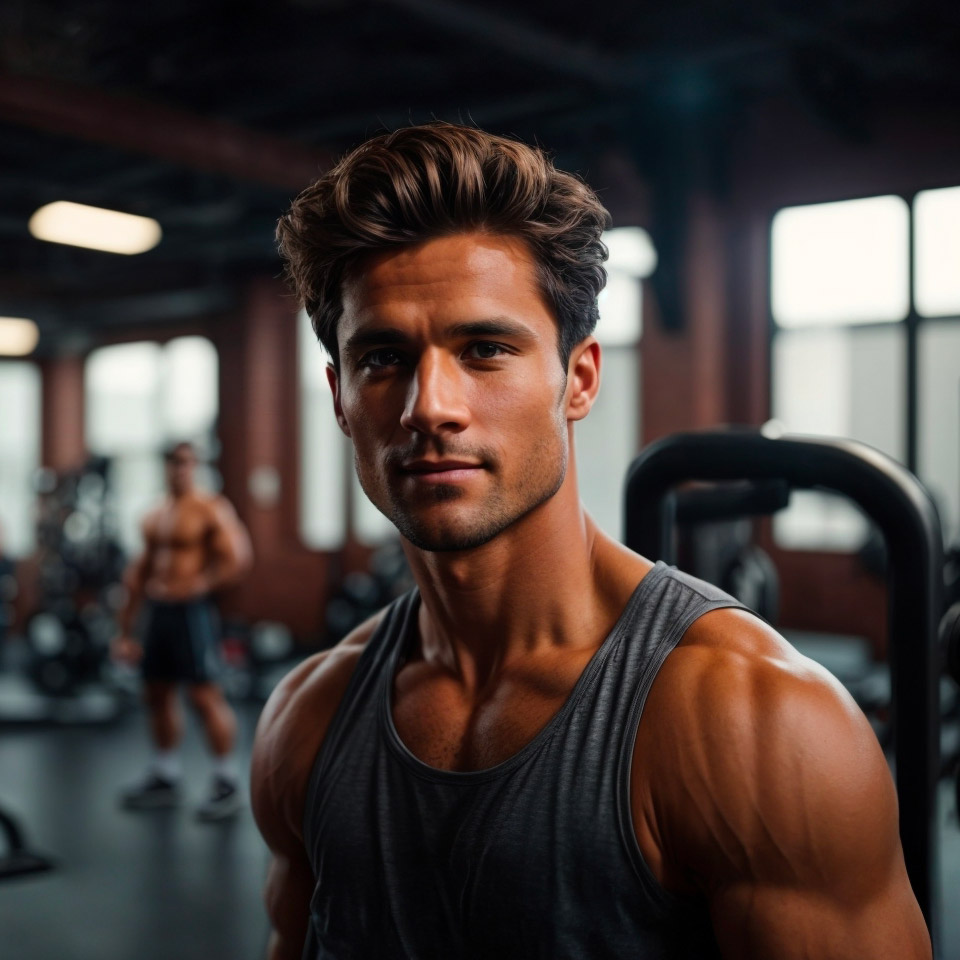
- When aiming to strengthen and develop your shoulders, the key element is not just the choice of exercises, but especially progression. Whether it's improving execution, increasing the weights lifted, or adjusting rest periods, every factor plays a crucial role in achieving your goals.
- Varying exercises also helps to strengthen all parts of the shoulder without weakening any particular area.
- Don't forget to properly fuel yourself for optimal results. If you don't feed your muscles, you can't help them grow!
Related posts
-
 Summer holidays: How to limit the damage?
Posted in: Our tips24/06/2021On holiday, we often tend to let ourselves go. Unless you're a hardcore sportsman, you tend to abandon your trainers...Read more
Summer holidays: How to limit the damage?
Posted in: Our tips24/06/2021On holiday, we often tend to let ourselves go. Unless you're a hardcore sportsman, you tend to abandon your trainers...Read more -
 Which fat burner to choose?
Posted in: Our tips26/05/2021To lose weight and burn fat, there is no secret: you have to do sport and take care of your diet. However, it is...Read more
Which fat burner to choose?
Posted in: Our tips26/05/2021To lose weight and burn fat, there is no secret: you have to do sport and take care of your diet. However, it is...Read more -
 Summer body edition for men: How to prepare your body?
Posted in: Our tips11/05/2021Gentlemen ? The return of the sun and its warm rays are almost here! The degrees are slowly but surely rising, but...Read more
Summer body edition for men: How to prepare your body?
Posted in: Our tips11/05/2021Gentlemen ? The return of the sun and its warm rays are almost here! The degrees are slowly but surely rising, but...Read more -
 9 good reasons to do sport.
Posted in: Our tips22/04/2021Sometimes the urge to exercise is not always there. And although we always tell ourselves that this year will finally...Read more
9 good reasons to do sport.
Posted in: Our tips22/04/2021Sometimes the urge to exercise is not always there. And although we always tell ourselves that this year will finally...Read more -
 Discover how to take care of your faithful companion: your shaker!
Posted in: Our tips07/04/2021In your bag, in your hand, in your sink, it is everywhere! The shaker is an essential element of any good training....Read more
Discover how to take care of your faithful companion: your shaker!
Posted in: Our tips07/04/2021In your bag, in your hand, in your sink, it is everywhere! The shaker is an essential element of any good training....Read more
Blog categories
Popular posts
-
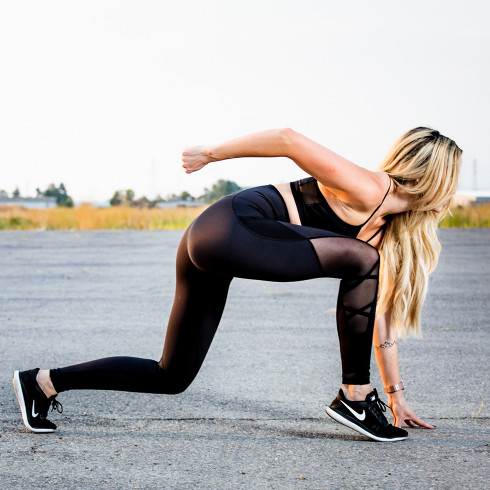 Looking thinner but at a heavier weight? Is that possible?04/10/2021Posted in: Our tipsAdvertising has shaped our thinking! We have been forced for years to believe that losing weight is the key to having...Read more
Looking thinner but at a heavier weight? Is that possible?04/10/2021Posted in: Our tipsAdvertising has shaped our thinking! We have been forced for years to believe that losing weight is the key to having...Read more -
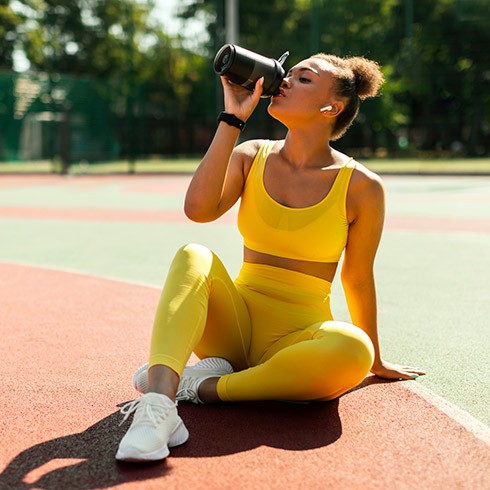 Proteins for weight loss !29/12/2023Posted in: Our tipsDive into the fascinating world of proteins and their key role in weight loss. Discover how to choose the best...Read more
Proteins for weight loss !29/12/2023Posted in: Our tipsDive into the fascinating world of proteins and their key role in weight loss. Discover how to choose the best...Read more -
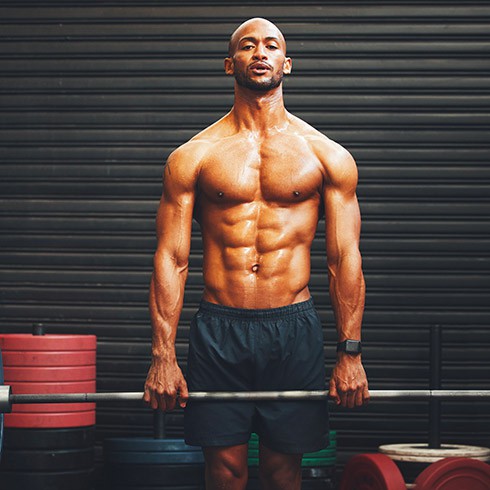 10 BENEFITS OF GLUTAMINE.02/01/2024Posted in: Our tipsDiscover the power of L-glutamine, an underrated superhero in the world of amino acids! Essential for revitalizing...Read more
10 BENEFITS OF GLUTAMINE.02/01/2024Posted in: Our tipsDiscover the power of L-glutamine, an underrated superhero in the world of amino acids! Essential for revitalizing...Read more -
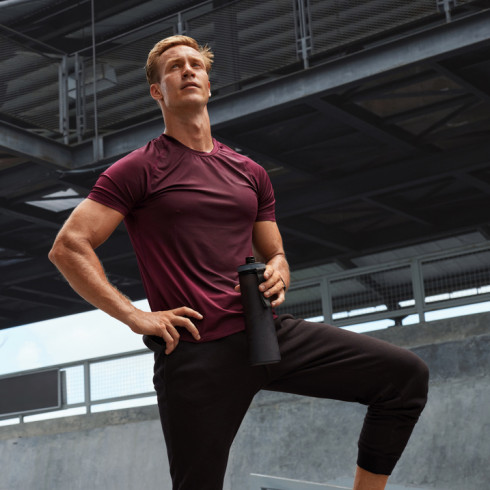 Which foods boost testosterone levels ?07/05/2021Posted in: Food supplementsTestosterone, often associated with virility, has much more to offer than you might think. It plays a crucial role in...Read more
Which foods boost testosterone levels ?07/05/2021Posted in: Food supplementsTestosterone, often associated with virility, has much more to offer than you might think. It plays a crucial role in...Read more -
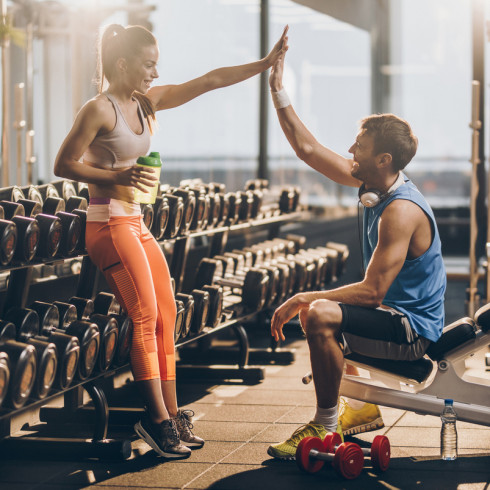 Is there a link between sex and sport?14/11/2019Posted in: LifestyleMany have already asked questions about sex and sport. Most of the time, people want to be reassured by the many...Read more
Is there a link between sex and sport?14/11/2019Posted in: LifestyleMany have already asked questions about sex and sport. Most of the time, people want to be reassured by the many...Read more
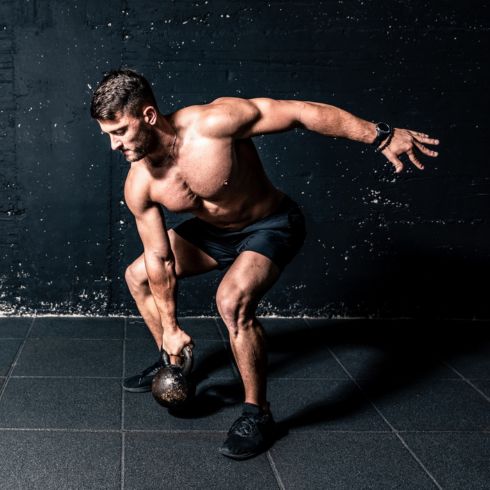
.jpg)

